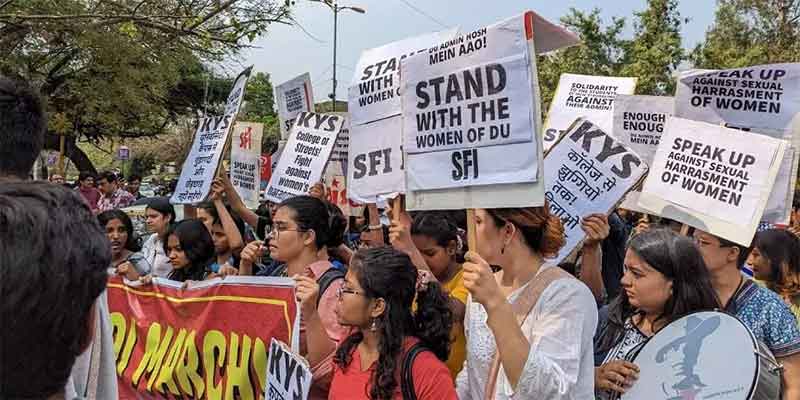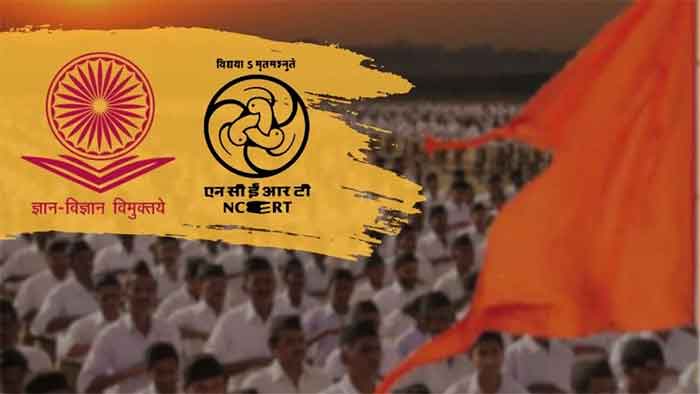by Riya Jain, Sagar Sengar and Sandeep Pandey

A Gujarat government Indian Administrative Service officer Dhaval Patel after visiting six primary schools in Chhota Udepur district among the tribal area made the following observation: ‘These poor tribal children do not have any other source of education. It is my strong opinion that we are doing injustice to them by giving them this rotten education. We are ensuring that they continue doing labour work generation after generation and not move forward in life. This is the height of moral decadence where we are cheating students and their parents who trust us blindly. Despite required infrastructure and teachers, how can we get such a level of education is a puzzle for me. Children stay with us for eight years. If they still cannot add and subtract, it shows the lack of capability of teachers.’ He found several class 8 students who could not add single digit numbers nor read a word of Gujarati, they would read it alphabet by alphabet. He also found mass copying to be a common phenomenon. Children without understanding the question in English had written the answer and all answers were same. Obviously the teachers had helped them.
The story of government schools, except for few states like Kerala, Tamil Nadu, Himachal Pradesh, Delhi and some states of Northeast is probably the same everywhere in India. The quality has been deliberately ignored so that private schools can prosper. The policy makers and administrators of government schools have hatched this conspiracy. They are not affected by it because all of them send their children to private schools.
The current state of the education system in India reflects a mix of achievements and challenges as the country strives to provide quality education for all its citizens. With a vast and diverse population, India faces the dual task of ensuring access to education and improving its quality across different regions and socio-economic backgrounds. While significant progress has been made in terms of enrolment rates and literacy, there are persistent issues such as uneven learning outcomes, gender disparities, and the need for vocational skills development. A closer look helps us realize that the disparities arise not only due to inefficiencies in the system but also how the education system in India has been shaped over decades.
Turning the pages of history helps us reflect on the same. The traditional Hindu education served the needs of Brahmin families, who were the highest caste in the social hierarchy. The Mughal education was also elitist. These pre-existing elitist tendencies were reinforced under British rule, which linked education to government service and colonial interests. The British education system also created a divide between English-medium and vernacular-medium schools, which persists to this day. After independence, Jawaharlal Nehru envisioned India as a secular democracy with a state-led command economy. He saw education as a tool to unite a country divided by wealth, caste, and religion and to foster self-reliance and modernization. However, carrying some of the traces of the British era has still favored the privileged class. One example of the same is the role of English language in education. English is seen as a marker of status and aspiration in Indian society, and it is also a requirement for many jobs and opportunities in the global market. However, not everyone has access to quality English-medium education, and many students struggle with learning English as a second or third language. This creates a gap between those who can afford or access English-medium education and those who cannot.
In India, the education landscape encompasses approximately 15 lakh schools, where an estimated 25 crore children are enrolled. Of this total, nearly 50 percent, or 12 crores, attend privately managed schools. These private schools account for about one-third of all schools in the country, amounting to approximately 4.5 lakh schools. The exponential growth of private schools and the increasing number of enrollments in these institutions over the past two decades highlight the inadequate condition of public schools and the diminishing confidence of parents in them.
The Kothari Commission, which was in effect from 1964 to 1966, Report proposed the establishment of a Common School System (CSS) in India. This system aimed to provide equal educational opportunities to all children by encompassing public schools, government-aided schools, and recognized private schools. The ultimate goal was to ensure that all schools within this system maintained a high standard of quality and efficiency, eliminating the need for parents to seek education outside of it. This concept, also associated with the idea of neighborhood schools, has been successfully implemented in countries such as the former Soviet Union, Cuba, the United States, the United Kingdom, and China. However, despite more than five decades since the recommendation was made, India has yet to achieve this vision, leaving it as an unrealized aspiration.
Implementing the CSS in India faces a significant obstacle in the form of social stigma among certain sections of the population. Middle-class parents often hesitate to enroll their children in schools that mix students from different economic backgrounds. They perceive their culture and standard of living to be vastly different from those of lower economic strata. This resistance to the idea of common schooling stems from the fear that their caste and social status will diminish, potentially endangering their dominance in society. As a result, the eliteness of a few sections of society is seen as threatened. This mindset continues to persist in society, and it hampers the coordination of efforts by the political administration in implementing the CSS. Consequently, the system’s vision remains unattainable, which emphasizes providing such high-quality education that parents do not feel the need to send their children to expensive private schools outside the system.
To effectively move forward, a comprehensive and engaged approach is necessary. It begins with generating strong political will and garnering support from policymakers, education experts, and stakeholders. This entails raising awareness about the advantages of the CSS and fostering consensus on the importance of providing equitable education opportunities for all children.
Bureaucracy, of which Dhaval Patel is a part, has failed the people of this country because it proved to be the most obstinate obstacle to implementation of CSS. In August 2015 Uttar Pradesh High Court Judge Sudhir Agrawal ordered the Chief Secretary to make is compulsory for every person receiving government salary to send their children to government schools and report back to the HC in six months with the compliance of order. The Chief Secretary did not even bother to reply to the court. The political masters whether of the then Samajwadi Party or the subsequent Bhartiya Janata Party government also did not care about the order.
It is India’s elite which is responsible for the neglect of our public education system because they have supported a private system of education for their children and do not bother about the children of masses. In fact, they do not want the children of masses to be competing with their children for coveted positions in good quality government run higher education institutions or lucrative opportunities abroad or plum service sector jobs. The children of masses after receiving sub-standard education, from which they’ll also drop out, are expected to continue serving the elite.
Riya Jain and Sagar Sengar are students at IIM Ahmedabad, Sandeep Pandey is General Secretary, Socialist Party (India).
E-mail ids: [email protected], [email protected], [email protected]
















































